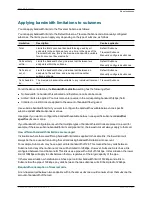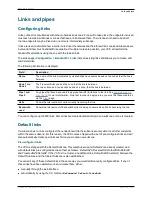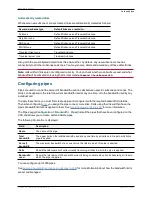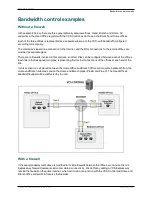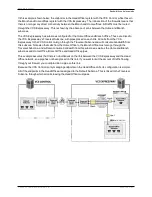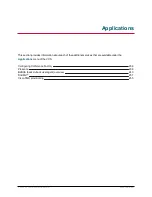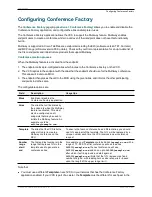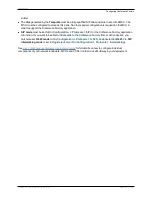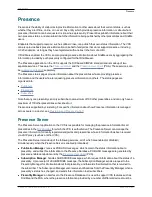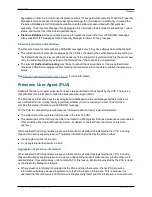
About subzones
The Local Zone is made up of subzones. Subzones are used to control the bandwidth used by various parts
of your network, and to control the VCS's registration, authentication and media encryption policies.
When an endpoint registers with the VCS it is allocated to an appropriate subzone, determined by
subzone
membership rules
based on endpoint IP address ranges or alias pattern matches.
You can create and configure subzones through the
Subzones
page (
Configuration > Local Zone >
Subzones
).
Three special subzones — the Default Subzone, the Traversal Subzone and the Cluster Subzone (only
applies if the VCS is in a cluster) — are automatically created and cannot be deleted.
Default links between subzones
The VCS is shipped with the Default Subzone and Traversal Subzone (and Default Zone) already created,
and with links between them. If the VCS is added to a cluster then default links to the Cluster Subzone are
also established automatically. You can delete or amend these
default links
if you need to model restrictions
of your network.
About the Traversal Subzone
The Traversal Subzone is a conceptual subzone. No endpoints can be registered to the Traversal Subzone;
its sole purpose is to control the bandwidth used by
traversal calls
.
The
Traversal Subzone
page (
Configuration > Local Zone > Traversal Subzone
) allows you to place
bandwidth restrictions on calls being handled by the Traversal Subzone and to configure the range of ports
used for the media in traversal calls.
Configuring bandwidth limitations
All traversal calls pass through the Traversal Subzone, so by applying bandwidth limitations to the Traversal
Subzone you can control how much processing of media the VCS will perform at any one time. These
limitations can be applied on a total concurrent usage basis, and on a per-call basis.
See
Applying bandwidth limitations to subzones [p.228]
for more details.
Configuring the Traversal Subzone ports
You can configure the range of ports used for the media in traversal calls. A single traversal call can consist
of up to 5 types of media (audio, video, far end camera control, dual streams and BFCP) and each type of
media may require a pair of ports – for example, audio and video each require one port for RTP, and one for
RTCP. Separate pairs of ports are required for the inbound and outbound portions of a call. A single traversal
call can therefore take up to 20 ports; if the B2BUA is invoked this increases to 40 ports (or even more if extra
media lines are required) as the call is routed through the B2BUA hosted on the VCS.
The default media port range of 36000 to 59999 applies to new installations of X8.1 or later. The first 2 ports
in the range are used for multiplexed traffic only (with Large VM deployments the first 12 ports in the range –
36000 to 36011 – are used). The previous default range of 50000 - 54999 still applies to earlier releases that
have upgraded to X8.1.
The port range can be changed to any values between 1024 and 65533. Ports are allocated from this range in
pairs, with the first port number of each pair being an even number. Therefore the range must start with an
even number and end with an odd number.
Cisco VCS Administrator Guide (X8.1.1)
Page 224 of 507
Bandwidth control
About subzones



















